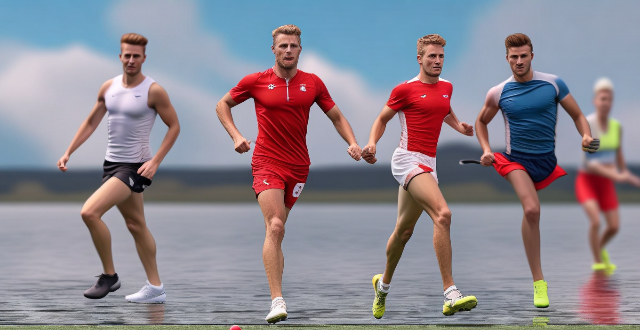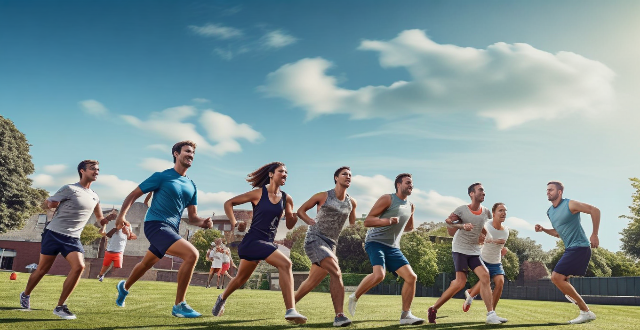Shot Sports

What are some tips for filming a successful unboxing video ?
Unboxing videos have become increasingly popular in recent years, with viewers tuning in to see the latest products being unveiled and reviewed. If you're looking to create a successful unboxing video, here are some tips to help you get started: 1\. Choose the Right Product - Research Popular Products: Look for products that are currently trending or highly anticipated by consumers. This will increase the likelihood of your video being watched and shared. - Consider Your Audience: Think about who your target audience is and what products they would be interested in seeing unboxed. This will help you choose a product that resonates with them. 2\. Set Up Your Shooting Space - Find a Well-Lit Area: Natural lighting is ideal, but if that's not possible, make sure to set up additional lighting sources to avoid any shadows or dark areas in your footage. - Clear the Background: Remove any clutter from the background to keep the focus on the unboxing process. A clean, simple background will also make your video look more professional. 3\. Use Quality Equipment - Invest in Good Camera: A high-quality camera will produce clearer, sharper images, making your video more enjoyable to watch. - Use a Tripod or Gimbal: To stabilize your shots, use a tripod or gimbal to eliminate shaky footage and keep your camera steady throughout the unboxing process. 4\. Plan Your Shots - Create a Shot List: Plan out each shot you want to capture during the unboxing process, including close-ups of the product and its features. This will help you stay organized and ensure that you don't miss any important details. - Vary Your Angles: Incorporate different angles and perspectives into your shots to keep things interesting for your viewers. For example, you could start with a wide shot of the entire package, then move in for closer shots of specific details. 5\. Keep It Short and Sweet - Focus on Key Points: Don't spend too much time on unnecessary details or long introductions. Instead, focus on showcasing the product and its features in an engaging way. - Edit Your Footage: After filming, take some time to edit your footage together into a cohesive video. Cut out any unnecessary parts and add transitions between shots to make it flow smoothly. 6\. Engage with Your Audience - Add Commentary: As you unbox the product, provide commentary on what you're seeing and how it feels. Share your thoughts on the product's design, functionality, and overall quality. - Encourage Interaction: Ask questions or encourage viewers to leave comments about their experiences with similar products. This will help build a sense of community around your video and increase engagement.

What role does cinematography play in making sports movies engaging ?
Cinematography plays a crucial role in making sports movies engaging by capturing the essence of athleticism and the drama of competition. Through the use of various filmmaking techniques, cinematographers can bring the excitement and emotions of sports to life on the screen. Here are some ways in which cinematography contributes to the appeal of sports movies: 1. Dynamic Camera Movement - Tracking shots, crane shots, and handheld shots create a sense of speed and momentum, reveal the scale of stadiums and crowds, and create an intimate, immersive experience for the viewer. 2. Creative Angles and Perspectives - Low angles make athletes appear powerful and dominant, high angles show the vulnerability or isolation of a character within a vast arena, and point-of-view shots allow the audience to see what the athlete sees, enhancing their connection to the action. 3. Lighting and Color - Contrast and shadows highlight the physicality of sport and the intensity of effort, color grading is used to convey mood, team identity, or historical eras, and backlighting creates a dramatic effect around athletes, often used in climactic moments. 4. Slow Motion and Fast Motion - Slow motion extends key moments to emphasize grace, power, or impact, while fast motion compresses time to show training sequences or build anticipation. 5. Special Effects and Visual Effects (VFX) - Chromakeying isolates athletes against different backgrounds for creative storytelling, CGI recreates historical events or enhances visually complex sports like underwater scenes, and compositing combines multiple layers of footage for dynamic scenes that couldn't be captured live. 6. Sound Design - Audio effects synch sound effects with visuals to heighten the impact of movements, and musical score supports the visuals, enhancing tension or celebration. 7. Editing Pace - Quick cuts build excitement during high-intensity moments, while long takes sustain tension during crucial plays or showcase skillful execution. 8. Storytelling through Visuals - Symbolic images use iconic sports imagery to tell stories without dialogue, and composition arranges elements within the frame to guide the audience's focus. 9. Emotional Engagement - Close-ups show facial expressions and reactions, drawing viewers into the emotional state of athletes, and environmental interaction captures interactions between athletes and their surroundings, like skimming fingers on a track or splashes in a pool. 10. Juxtaposition and Montage - Narrative montage tells backstory or parallel plotlines through a series of short, thematically connected shots, while contrast montage compares different worlds or states of mind by cutting between contrasting scenes. In summary, cinematography is not just a tool for aesthetic enhancement in sports movies; it is a language that translates the physicality, emotion, and narrative of sports into a compelling visual experience. By masterfully employing these techniques, filmmakers can transform a simple game into an unforgettable cinematic journey.

What are the basic techniques for playing golf ?
Golf requires a blend of skill, focus, and strategy. Learn grip styles like neutral, strong, and weak for control. Maintain a stable stance with feet shoulder-width apart and weight evenly distributed. Posture should be bent from the hips with eyes over the ball. The swing involves a smooth backswing, synchronized downswing with weight shift, and a relaxed follow-through. Putting emphasizes alignment, stroke path, and distance control. Short game techniques include bunker shots with an open face, pitch shots with wrist hinge, and chip shots for control near the green. Practice is key to improvement.

What techniques can be used to improve accuracy in sports like archery or shooting ?
Improving accuracy in sports like archery or shooting can be achieved by following certain techniques. These include maintaining proper stance and grip, focusing on the target, controlling breath, relaxing muscles, practicing consistency, visualization and mental preparation, and being aware of environmental factors. By implementing these techniques, athletes can significantly improve their accuracy in sports like archery or shooting.

What role does creativity play in sports performance ?
Creativity plays a significant role in sports performance, enhancing problem-solving abilities, improving decision-making skills, and fostering mental toughness. Athletes who are creative thinkers can come up with innovative solutions to challenges, make split-second decisions that impact game outcomes, and stay focused under pressure. Moreover, creativity contributes to the development of new techniques and styles within sports, pushing boundaries and evolving the sport itself. By harnessing their creative potential, athletes can elevate their performance and achieve greater success.

Can team sports help in coping with pressure ?
Team sports can help cope with pressure by developing resilience, building confidence, providing supportive networks, and teaching time management.

What impact do sports have on the emotional content of a story or poem ?
The impact of sports on emotional content in stories and poems is significant, evoking a range of emotions including joy, sadness, excitement, disappointment, triumph, perseverance, camaraderie, and friendship. Sports can inspire readers with the accomplishments of athletes who win competitions or achieve personal bests, create a sense of excitement and happiness among readers, lead to feelings of disappointment and sadness when an athlete fails to meet their goals or suffers an injury, inspire readers with the resilience and dedication of athletes who overcome injuries or setbacks to achieve success, showcase the importance of friendship and loyalty through teamwork and camaraderie, and evoke feelings of warmth and affection between characters in a story or poem. By incorporating sports into their writing, authors can create compelling narratives that resonate with readers on an emotional level.

How does AI influence coaching and strategy development in sports ?
Artificial Intelligence (AI) is transforming the world of sports, especially in coaching and strategic planning. AI technologies offer coaches valuable insights to make data-based decisions that can significantly boost team performance. AI's influence on coaching and strategy development in sports includes performance analysis, game strategy development, and injury prevention and recovery. AI algorithms can analyze vast amounts of player performance data, providing coaches with detailed insights into areas where improvements can be made. AI technologies can also assist coaches in developing game strategies by analyzing opponent teams' strengths and weaknesses. Additionally, AI plays a crucial role in injury prevention and recovery by monitoring player health and fitness levels. As AI technologies continue to advance, we can expect even more innovative solutions that will further enhance the coaching experience and drive success in sports.

How significant is the role of luck or chance in determining success at high-level sports competitions ?
Luck or chance can play a significant role in determining success at high-level sports competitions. Factors such as injuries, weather conditions, equipment malfunctions, referee decisions, and opponent's mistakes can all contribute to an unexpected outcome. However, skill, training, and strategy are still the most critical factors in determining success in sports.

What role does sports play in shaping an individual's personality and character ?
Sports play a crucial role in shaping an individual's personality and character. They foster the development of social skills such as teamwork, leadership, and resilience. Participating in sports also builds self-confidence through achievement and overcoming fears. Additionally, sports promote discipline and time management by requiring consistent practice and training schedules. Goal setting is another important aspect of sports that teaches individuals about planning and focus. Finally, sports encourage healthy lifestyle habits by promoting physical fitness and raising awareness about proper nutrition. Overall, sports provide valuable experiences that contribute to personal growth and success in various aspects of life.

Can AI provide objective data to support or refute controversial calls in sports ?
AI can provide objective data to support or refute controversial calls in sports by analyzing vast amounts of data, capturing high-resolution images and precise measurements, processing data quickly, and making decisions based on consistent criteria. Examples of AI applications in sports include instant replay reviews, performance tracking, ball trajectory analysis, decision support systems, and bias detection and mitigation. However, challenges such as integration with current systems, human oversight, cost and accessibility, ethics and privacy must be considered to ensure responsible and effective implementation of these technologies.

What are some of the most memorable moments in sports movies ?
Sports movies often showcase the triumphs and struggles of athletes, capturing our hearts and inspiring us to be our best selves. Here are some of the most memorable moments in sports movies: 1. The Miracle on Ice (Miracle, 2004) - Herb Brooks coaching the 1980 U.S. men's Olympic hockey team to victory over the Soviet Union during the Cold War. 2. Rocky Balboa's Victory (Rocky, 1976) - Sylvester Stallone stars as an underdog boxer who gets a chance to fight for the world heavyweight championship. 3. The Blind Side (The Blind Side, 2009) - Sandra Bullock stars as Leigh Anne Tuohy, who adopts Michael Oher, a homeless teenager with a troubled past, and helps him become a successful football player. 4. Remember the Titans (Remember the Titans, 2000) - Denzel Washington stars as Herman Boone, an African American coach tasked with integrating a newly formed high school football team in Virginia during the civil rights era. 5. Hoosiers (Hoosiers, 1986) - Gene Hackman stars as Norman Dale, a basketball coach who takes on the challenge of leading a small-town Indiana high school team to victory in the state championship.

What role does visualization play in sports performance ?
Visualization is a powerful tool that can enhance sports performance by improving focus, confidence, technique, recovery, and motivation. It involves creating mental images of desired outcomes or actions, which can lead to better concentration, increased self-efficacy, enhanced motor learning, reduced risk of injuries, and higher levels of motivation. By incorporating visualization into their training routines, athletes can strengthen their physical and mental capabilities, resulting in improved performance during competition and training.

What techniques are used in filmmaking to make slow-paced sports like golf or chess more exciting for viewers ?
Slow-paced sports like golf or chess can be challenging to make exciting for viewers. However, filmmakers use various techniques to enhance the viewing experience and keep audiences engaged. Here are some of the most common techniques used: 1. Close-Up Shots 2. Drama Between Players 3. Commentary and Analysis 4. Music and Sound Effects 5. Visual Effects and Graphics 6. Storytelling 7. Multiple Camera Angles 8. Replays and Highlights 9. Interactive Elements 10. Narration

What are some of the best sports movies of all time ?
The text enlists some of the best sports movies of all time, including "Rocky", "Hoosiers", "Remember the Titans", "Miracle", and "The Blind Side". These films not only provide entertainment but also serve as inspirational tales that resonate with audiences worldwide by highlighting the human spirit, perseverance, teamwork, and the thrill and excitement of the game.

What are some of the most successful sports movies of all time ?
Sports movies have always been a popular genre in the film industry. They are not only entertaining but also inspiring and motivational. Here are some of the most successful sports movies of all time: 1. Rocky (1976) 2. The Blind Side (2009) 3. Remember the Titans (2000) 4. Miracle (2004) 5. Moneyball (2011)

How can sports psychology help athletes manage stress and pressure during competitions ?
Sports psychology helps athletes manage stress and pressure during competitions by providing techniques and strategies to improve mental toughness, confidence, and focus. These techniques include goal setting, visualization, breathing exercises, mindfulness and meditation practices, and coping strategies such as problem-solving and emotion regulation. By implementing these tools, athletes can improve their performance and enjoy their sport more fully.

What software tools are commonly used for sports data analysis by coaches and analysts ?
Sports data analysis has become a crucial aspect of modern sports coaching and management. Coaches and analysts use various software tools to collect, analyze, and interpret data to enhance team performance, player development, and tactical planning. Some commonly used software tools for sports data analysis include Prozone, StatsBomb, Opta, Hudl, and SoccerMetrics. These tools offer features such as player performance analysis, event data tracking, in-depth match analysis, video analysis, performance tracking, and visualization tools. Coaches and analysts can choose the ones that best suit their needs and preferences to gain valuable insights into their team's performance and make informed decisions to improve their results.

Can sport-specific meditation or mindfulness practices improve performance and mental clarity ?
Sport-specific meditation and mindfulness practices can improve performance and mental clarity for athletes. These techniques offer benefits such as improved focus, reduced stress and anxiety, and enhanced recovery. Incorporating these practices into training regimens can help athletes achieve better results.

How has technology influenced the design of sports fashion ?
Technology has significantly influenced sports fashion design, introducing advanced materials, digital printing techniques, smart wearables, and increased customization options. These innovations have enhanced the functionality, comfort, and style of sports apparel, catering to individual preferences and needs.

How does sports sponsorship impact the grassroots level of sports and sports development programs ?
Sports sponsorship has a significant impact on grassroots sports and sports development programs by providing financial support, resources, and exposure. Sponsorship money can be used to fund equipment, facilities, coaching, and other essential resources required for the smooth functioning of these programs. Additionally, sponsors often provide high-quality equipment, improve sports facilities, fund professional coaching, and invest in marketing and promotional activities. Sports sponsorship also provides valuable exposure opportunities for grassroots sports and sports development programs, helping them gain recognition, credibility, and attract more participants, fans, and sponsors. Overall, sports sponsorship plays a crucial role in promoting sports participation and contributing to the overall development of athletes and the sport itself.

How does sports medicine help prevent injuries in sports ?
The text discusses how sports medicine helps in preventing injuries in sports by providing athletes with necessary knowledge, skills, and resources for maintaining their health and safety. It outlines key ways such as pre-participation physical examinations, proper warm-ups, strength training programs, correct technique, injury management, and education. These measures aim to identify risks, prepare the body for exercise, enhance fitness levels, promote safe practices, and manage injuries effectively. Overall, sports medicine plays a vital role in fostering a culture of safety and well-being within sports communities.

What is the impact of sports movies on the sports industry ?
Sports movies have a significant impact on the sports industry by inspiring and motivating people, promoting healthy lifestyles, generating interest in different sports, and providing marketing and branding opportunities. These movies can encourage people to pursue their dreams, work hard, and never give up, as well as highlight the importance of physical fitness and healthy living. Additionally, sports movies can generate interest in less popular or well-known sports and provide excellent marketing and branding opportunities for companies involved in the sports industry. Overall, sports movies play an essential role in shaping public perception and attitudes towards sports and physical activity.

How does team sports impact mental health compared to individual sports ?
This article explores how team sports impact mental health compared to individual sports. It highlights the social support and belongingness provided by team sports, which can reduce feelings of isolation and loneliness. The article also discusses how team sports promote accountability and responsibility, helping individuals develop discipline and self-control. Additionally, it emphasizes the importance of goal setting and achievement in team sports, which can boost self-esteem and confidence. Overall, the article concludes that team sports have a significant impact on mental health compared to individual sports due to their social aspect.

What are the must-have pieces in a sports fashion wardrobe ?
A well-curated sports wardrobe is essential for those who want to look good while working out or running errands. Must-have pieces include athletic shoes, leggings, sports bras, tank tops and t-shirts, shorts and skirts, jackets and hoodies, and accessories like hats, sunglasses, fitness trackers, and water bottles. Popular brands include Nike, Adidas, Reebok, Lululemon, Sweaty Betty, Under Armour, Brooks, Patagonia, Outdoor Voices, Asics, New Balance, The North Face, Columbia, Fitbit, and Hydro Flask.

Can team sports contribute to mental rejuvenation more than individual sports ?
Team sports may contribute more to mental rejuvenation than individual sports due to increased social interaction, motivation, and sense of belonging. However, individual preferences vary, and some people may find greater mental rejuvenation through individual sports or other activities that bring them joy and fulfillment.

How can I find the best deals on sports equipment online ?
Finding the best deals on sports equipment online requires research, patience, and using various strategies. These include comparing prices across different retailers, looking for discount codes and promotions, shopping during sales and holidays, considering buying used or refurbished equipment, and joining loyalty and rewards programs. By following these tips, you can save money while getting high-quality gear for your favorite sports activities.

Can sports supplements improve athletic performance ?
Sports supplements claim to enhance athletic performance, but their effectiveness varies. Common types include protein, creatine, pre-workout, BCAAs, and multivitamins/minerals. Some studies support their benefits, especially when used correctly and in conjunction with proper nutrition and training. However, potential downsides include health risks, unproven claims, and high costs. Consult a healthcare professional before using sports supplements to ensure they align with individual goals and health status.

Can I get sports insurance for my child who plays school sports ?
Sports insurance can provide coverage for athletes participating in organized sports, including school sports. Consider factors like age limit, type of sports, level of competition, and coverage details when selecting a policy. Cost, duration, additional benefits, and the application process are also important considerations. While sports insurance offers peace of mind and financial protection, it can be expensive and may have limitations. Evaluate your child's needs and consult with an insurance professional to make an informed decision.